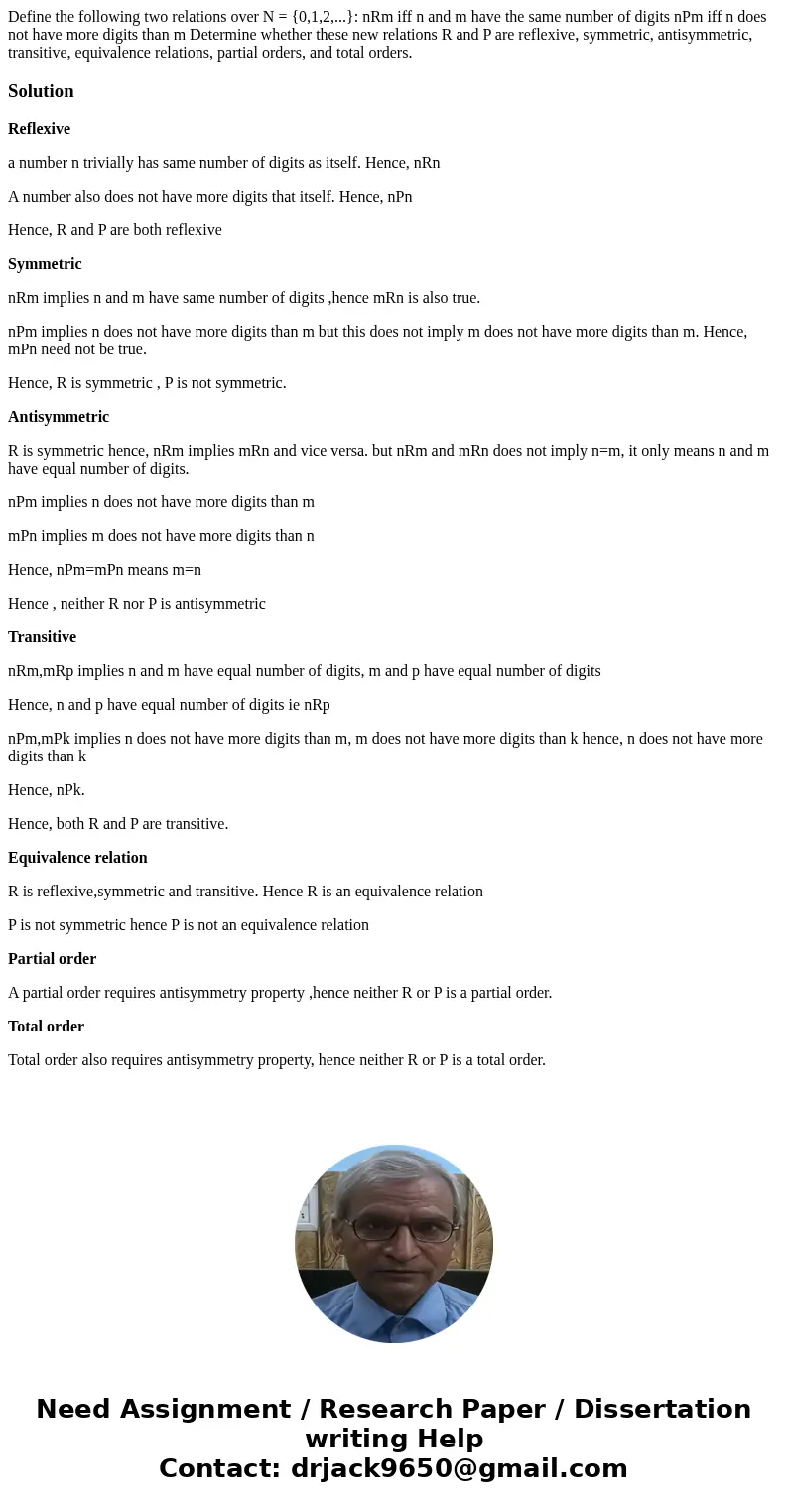Define the following two relations over N 012 nRm iff n and
Solution
Reflexive
a number n trivially has same number of digits as itself. Hence, nRn
A number also does not have more digits that itself. Hence, nPn
Hence, R and P are both reflexive
Symmetric
nRm implies n and m have same number of digits ,hence mRn is also true.
nPm implies n does not have more digits than m but this does not imply m does not have more digits than m. Hence, mPn need not be true.
Hence, R is symmetric , P is not symmetric.
Antisymmetric
R is symmetric hence, nRm implies mRn and vice versa. but nRm and mRn does not imply n=m, it only means n and m have equal number of digits.
nPm implies n does not have more digits than m
mPn implies m does not have more digits than n
Hence, nPm=mPn means m=n
Hence , neither R nor P is antisymmetric
Transitive
nRm,mRp implies n and m have equal number of digits, m and p have equal number of digits
Hence, n and p have equal number of digits ie nRp
nPm,mPk implies n does not have more digits than m, m does not have more digits than k hence, n does not have more digits than k
Hence, nPk.
Hence, both R and P are transitive.
Equivalence relation
R is reflexive,symmetric and transitive. Hence R is an equivalence relation
P is not symmetric hence P is not an equivalence relation
Partial order
A partial order requires antisymmetry property ,hence neither R or P is a partial order.
Total order
Total order also requires antisymmetry property, hence neither R or P is a total order.

 Homework Sourse
Homework Sourse